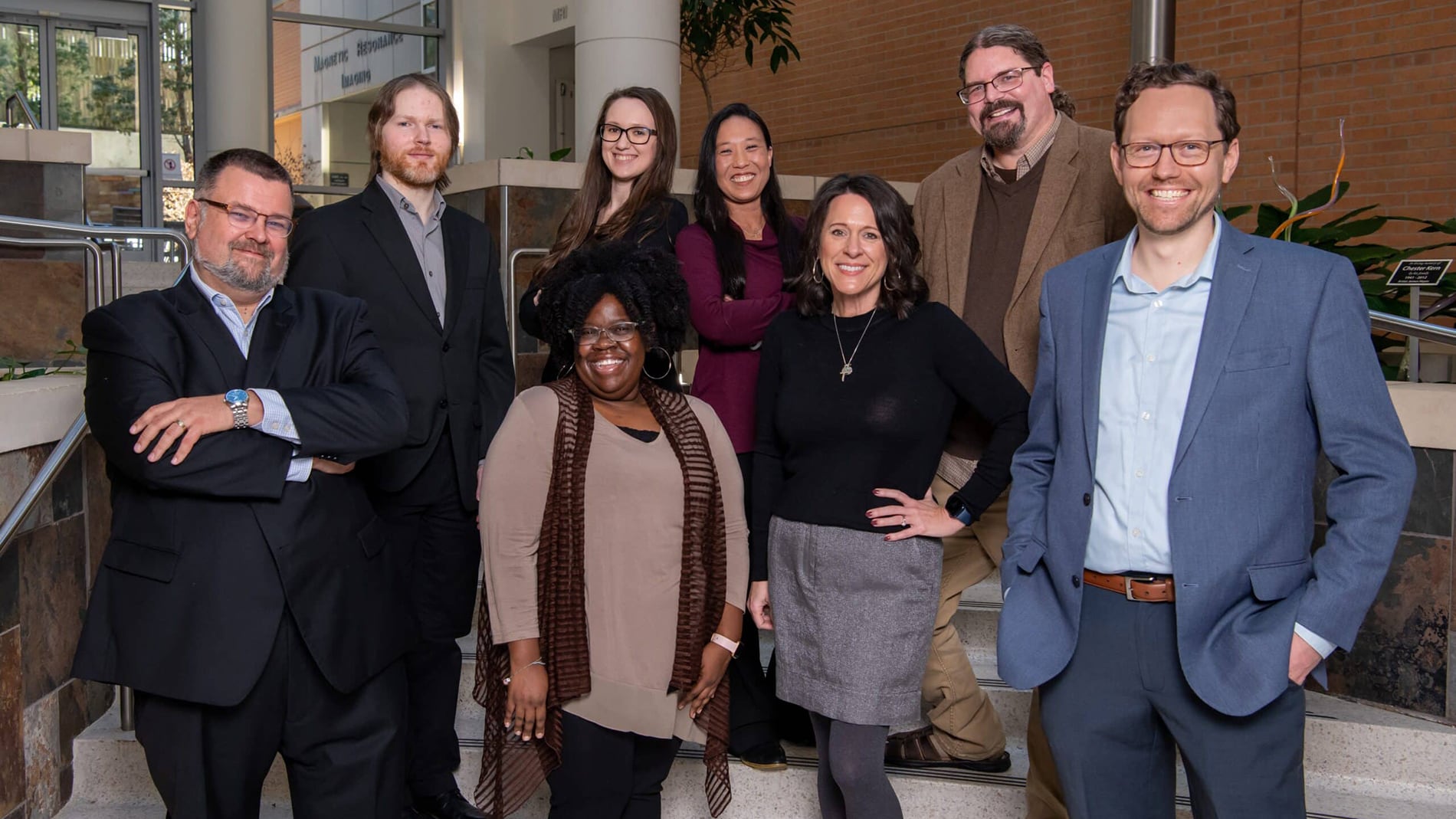UAMS Advances Health Equity with Computer-Guided Study Consent Forms
| LITTLE ROCK — A new software tool developed at the University of Arkansas for Medical Sciences (UAMS) will help researchers quickly create consent documents in plain language for their prospective study volunteers.
Called the Informed Consent Navigator, the web-based tool breaks new ground with its ability to guide researchers through the creation of plain-language informed consent forms at an eighth-grade reading level or below. The Journal of Clinical and Translational Science published the Translational Research Institute team’s work in December, drawing immediate interest from several research institutions across the United States.
“This is a big win for health equity and a big achievement for UAMS,” said co-author Mathias Brochhausen, Ph.D., a professor in the College of Medicine Department of Biomedical Informatics.
First-author Jonathan Bona, Ph.D., led creation of the computer-guided navigation as part of an interdisciplinary research team that includes biomedical informaticists, software developers, research ethicists, and experts in community engagement, health literacy, health education, plain-language writing, clinical trials and informed consent.
“What has been really novel and beneficial is working with folks from across UAMS to make this the best possible tool for researchers and the community,” said Bona, an assistant professor in the College of Medicine’s Department of Biomedical Informatics.
The team was assembled and supported by UAMS Translational Research Institute Director Laura James, M.D., a co-author.
“This project truly played to UAMS’ strengths and is a testament to multidisciplinary team science and the vital support of the Translational Research Institute,” said Brochhausen. “In addition to the institute’s financial support, Dr. James and her team have been with us in the trenches, attending our meetings and helping connect us to key resources.”
Informed consent forms are often lengthy and difficult to understand, a major barrier that limits inclusion of people with low health literacy, including those from underserved or underrepresented minority populations.
In the United States, researchers are required by a federal policy known as the Revised Common Rule to create consent forms that are readily understandable to all prospective research participants. Many research groups across the country have been working on automated processes to help researchers create compliant consent forms.
“We were able to get further than any other group with our tool’s added health equity benefits,” Brochhausen said.
The Informed Consent Navigator builds on years of work by a collaborative team including the UAMS Center for Health Literacy, which created a plain-language consent form template and made it available to all researchers. Plain-language experts at the center created a large bank of text that is approved by the UAMS Institutional Review Board and covers a broad range of research. Now part of the navigator, the text is automatically populated in the informed consent form based on the user’s answers to questions presented by the navigator.
Where researchers must write original text about their specific studies, the navigator provides instructional text, content examples and real-time feedback with readability scores and suggestions to improve readability.
The navigator also uses survey logic that helps tailor what researchers see as they are guided through the process, reducing the difficulty and eliminating errors often made when using print-based templates.
“The goal for this is not just to make it easier for researchers to build forms, but to do so in a way that checks and encourages — and in some cases enforces — that the forms are understandable and not complicated by medical jargon,” Bona said.
The team plans to pilot the Informed Consent Navigator with clinical research studies at UAMS and other institutions. Prior to that, the latest version of the navigator will be presented to a Community Review Board made up of community representatives recruited by the Translational Research Institute’s Community Engagement team.
“Having community reviewers tell us what is clear and what is not clear is very useful,” Bona said, noting that the community board has given its feedback twice before. “We’ve had great communication with the board and their input has already led to improvements in the navigator.”
UAMS is the state’s only health sciences university, with colleges of Medicine, Nursing, Pharmacy, Health Professions and Public Health; a graduate school; a hospital; a main campus in Little Rock; a Northwest Arkansas regional campus in Fayetteville; a statewide network of regional campuses; and eight institutes: the Winthrop P. Rockefeller Cancer Institute, Jackson T. Stephens Spine & Neurosciences Institute, Harvey & Bernice Jones Eye Institute, Psychiatric Research Institute, Donald W. Reynolds Institute on Aging, Translational Research Institute, Institute for Digital Health & Innovation and the Institute for Community Health Innovation. UAMS includes UAMS Health, a statewide health system that encompasses all of UAMS’ clinical enterprise. UAMS is the only adult Level 1 trauma center in the state. UAMS has 3,275 students, 890 medical residents and fellows, and five dental residents. It is the state’s largest public employer with more than 12,000 employees, including 1,200 physicians who provide care to patients at UAMS, its regional campuses, Arkansas Children’s, the VA Medical Center and Baptist Health. Visit www.uams.edu or uamshealth.com. Find us on Facebook, X (formerly Twitter), YouTube or Instagram.###

